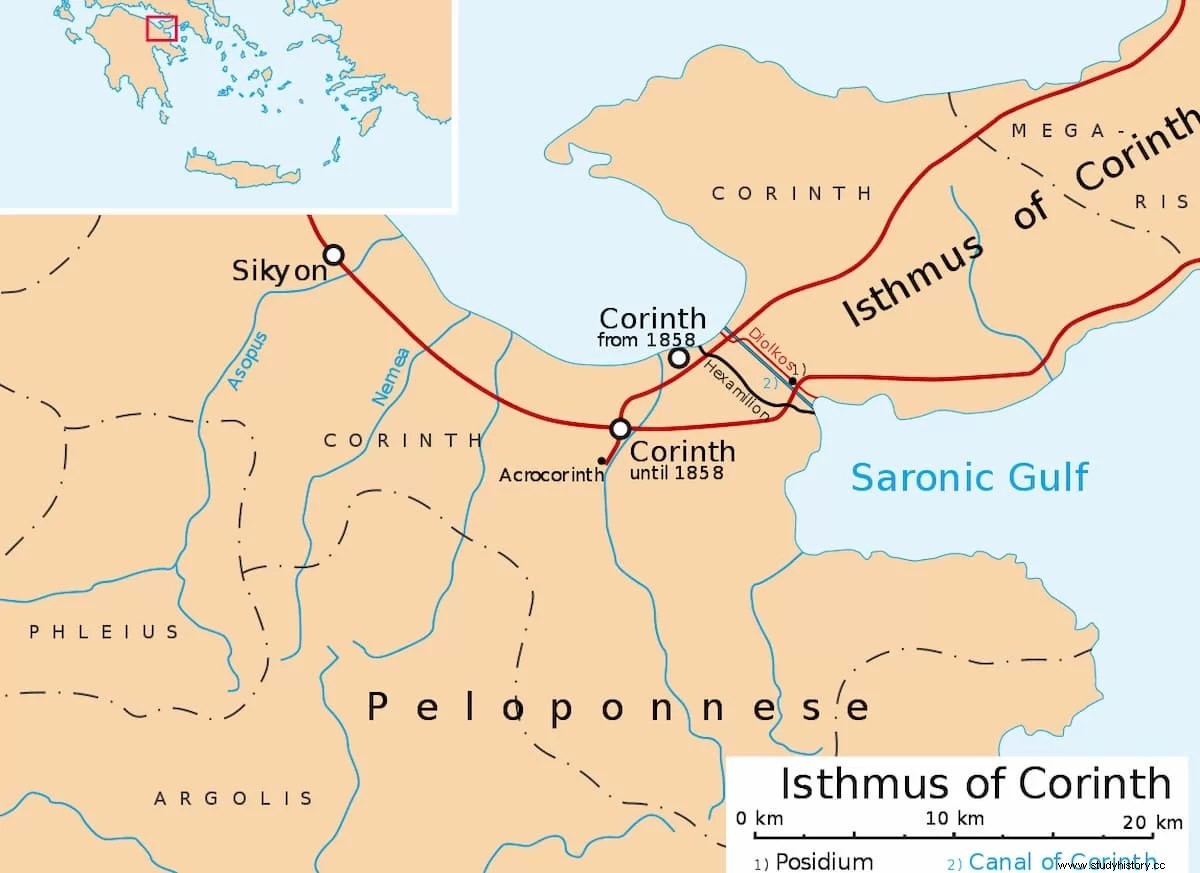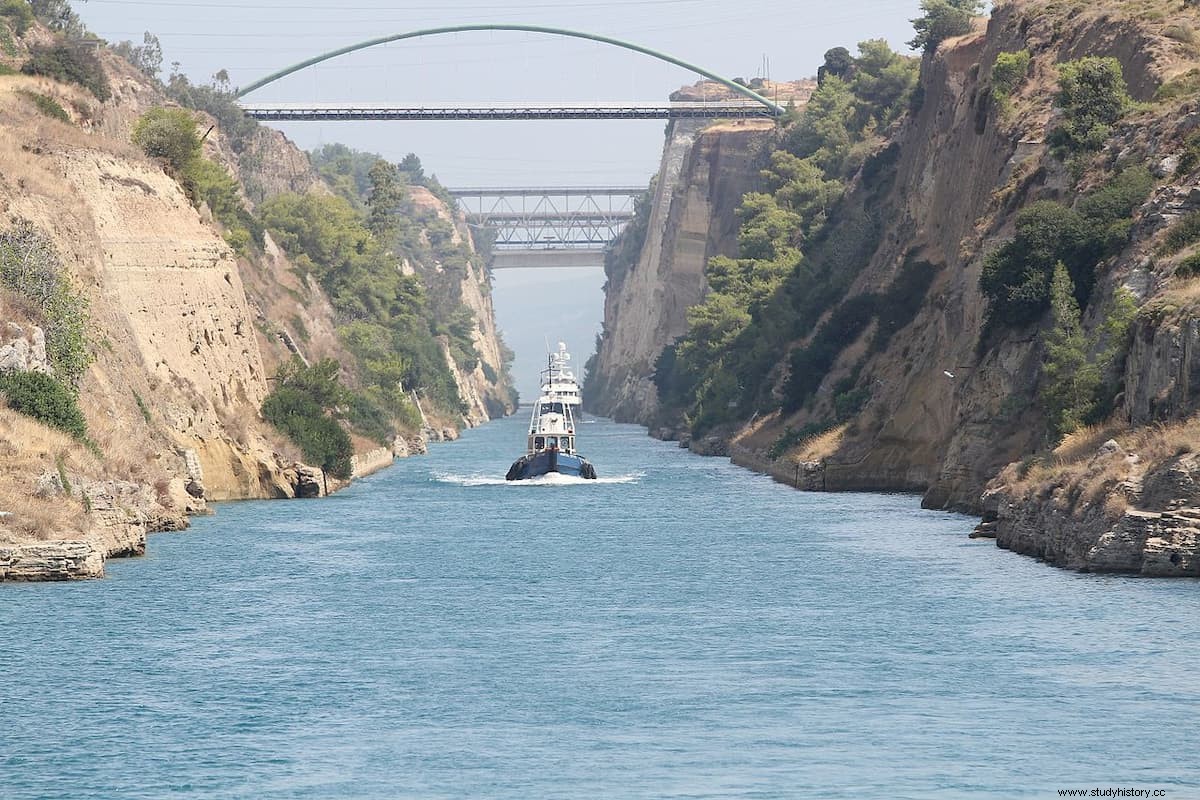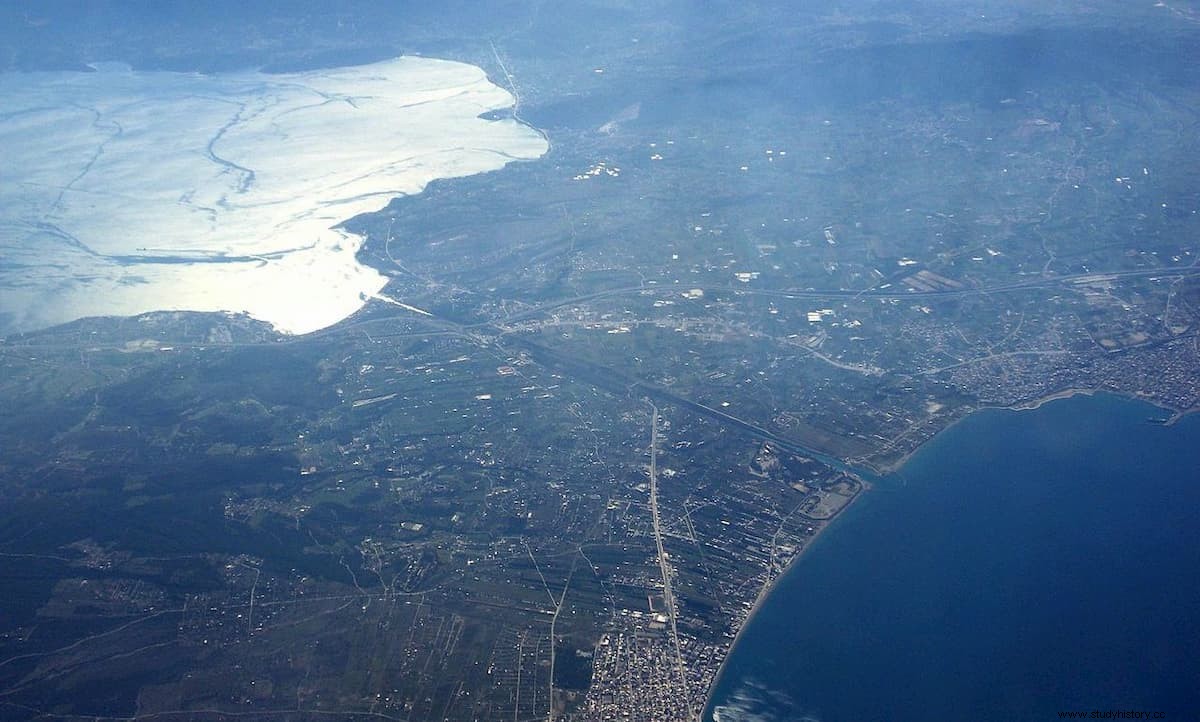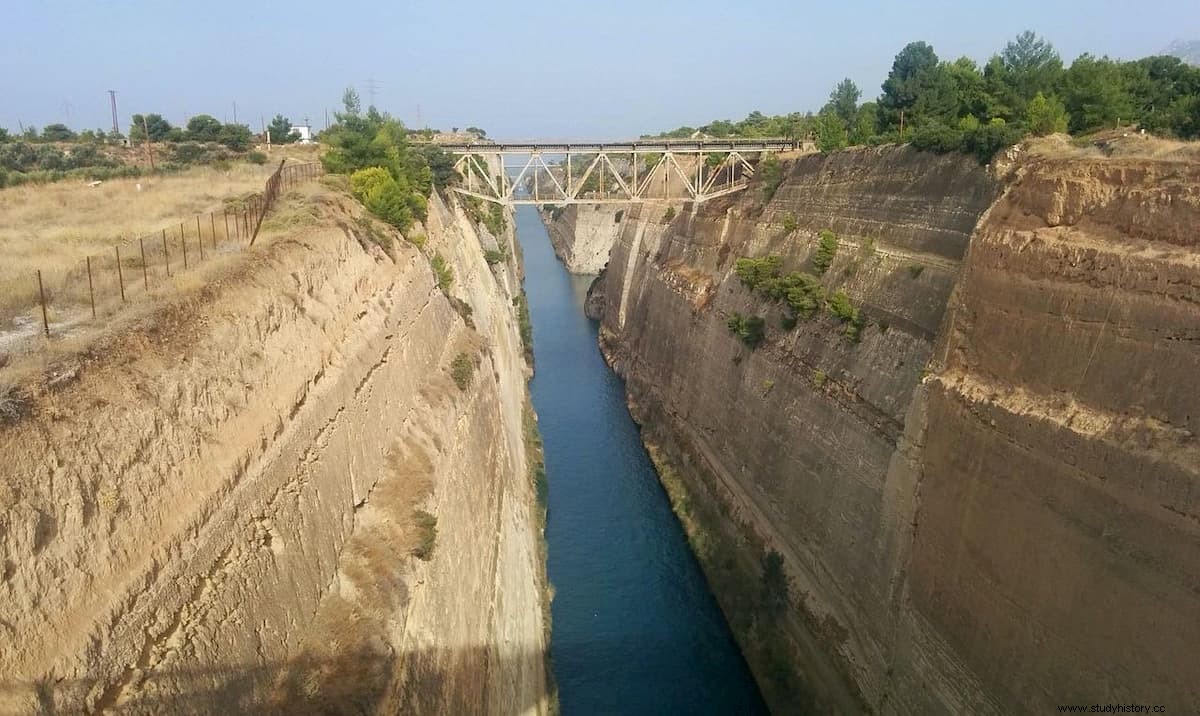The Corinth Canal, which links the gulf of the same name in the northwest of the Peloponnese with the Saronic Gulf in the Aegean through a 6.3-kilometre-long waterway, was built at the end of the 19th century, between 1881 and 1893.
But the idea was not new, it was several centuries old (even Nero made a renowned attempt whose remains are still visible).
The first to propose the construction of a canal on the Isthmus of Corinth was the tyrant Periander as early as the 7th century BC. However, in the end the project that was carried out was the diolkos , a paved causeway with grooves on the sides over which ships were pulled in an olkos , a kind of rudimentary wagon. The diolkos it remained in use until the 1st century AD, and its remains can still be seen today alongside the modern canal.

About 300 years later, it would be Demetrius Poliorcetes, king of Macedonia, who, according to Strabo, between 304 and 303 B.C. decided to undertake the work of opening a canal. However, he also abandoned the idea when his engineers informed him that the sea level in the Gulf of Corinth was higher than in the Saronic Gulf, and therefore there was a possibility of flooding in the Peloponnese and the islands:

For a long time it was thought that those engineers must have made their measurements wrong, and it is possible that they were. Says Walter Werner in an article published in 1997 in The International Journal of Nautical Archeology :
Why had those engineers erred in such an incomprehensible way? Perhaps they had reasons to oppose the construction of the canal? Is there something the ancient sources don't tell us?

As surprising as it sounds, the engineers were not totally wrong. In 2007 Stathis C. Stiros, a professor at the Laboratory of Geodesy at the University of Patras in Greece, published an article entitled Misconceptions about the risks of coastal flooding after the excavation of the Suez and Corinth canals in ancient times in which he directly addressed the matter. According to Stiros:
In other words, depending on the wind and the tides, the difference in sea altitude between the two ends of the Isthmus of Corinth can be up to 0.5 meters. Therefore, although Demetrio's engineers were wrong about the effects that this could have, they were not so far off the mark and even noticed such a minimal difference in altitude, something certainly interesting considering the tools they would have to make the calculations. .

Nor were they wrong about the current that would form in the channel. Today it is known that this current exists, and it circulates from west to east at about three knots of speed. Obviously, it's a slight current, but current nonetheless.
Stiros also believes that the main cause for abandoning the project was not the measurements, but the enormous amount of material that was going to be excavated for the canal (walls up to 80 meters high) .
And he adds that, the exaggeration of possible negative impacts, in particular the risk of flooding of coastal areas, was used by critics to force the abandonment of the project during ancient times .
